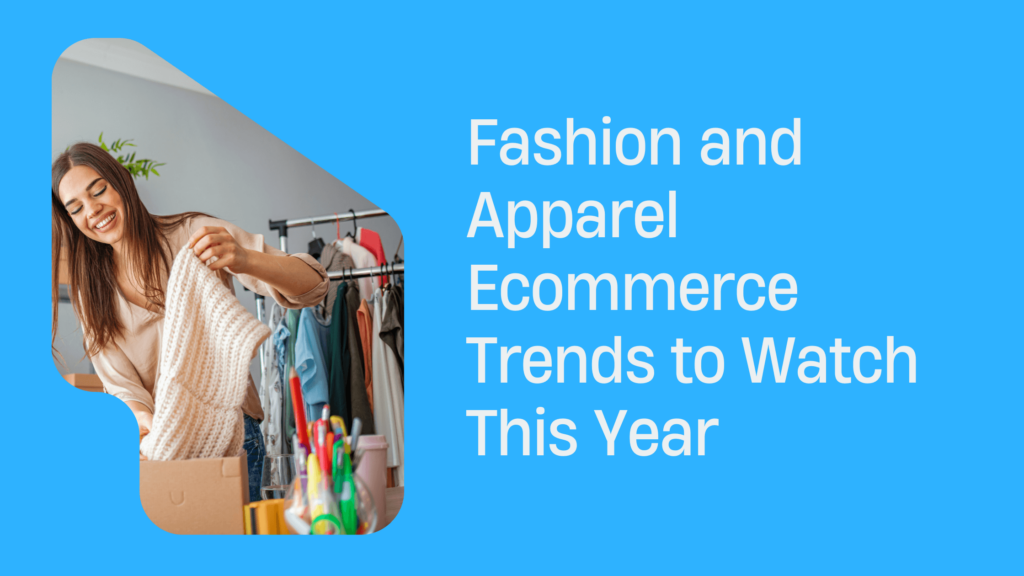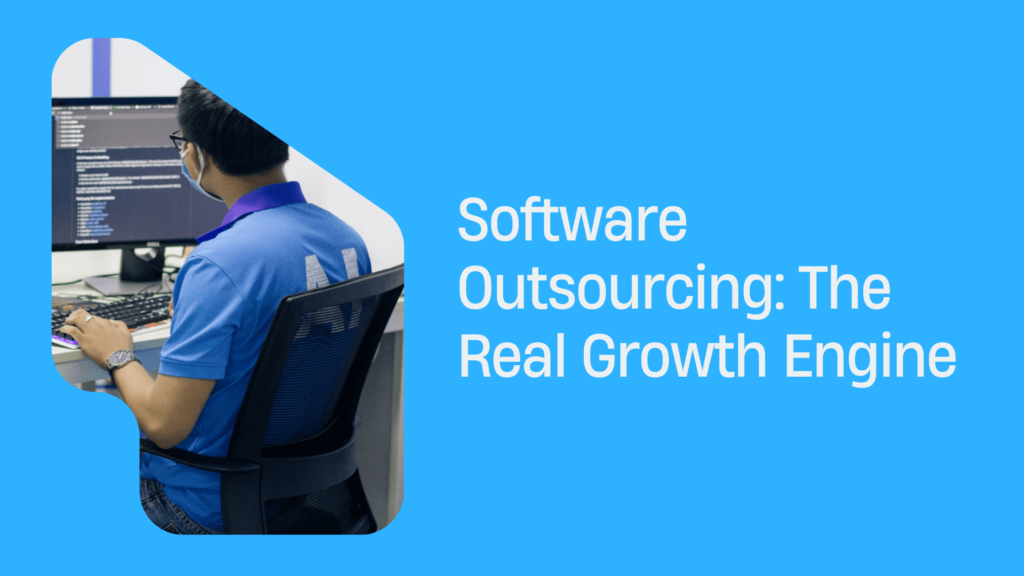Fashion and Apparel Ecommerce Trends to Watch in 2025
Fashion ecommerce is evolving fast. New technology, changing customer preferences, and industry shifts are shaping the future. Staying ahead of trends helps brands stay competitive and meet customer expectations. In 2025, key factors like AI-driven personalization, social commerce, and sustainable fashion will play a big role.
Augmented reality, fast fulfillment, and the rise of direct-to-consumer brands will also impact the industry. Understanding these trends will help fashion retailers adapt, innovate, and grow in the ever-changing ecommerce landscape.
AI and Personalization in Fashion
Artificial intelligence (AI) is transforming the way people shop for fashion. It helps brands offer a more personalized, seamless, and engaging shopping experience. From virtual stylists to smart inventory management, AI is changing every step of the fashion ecommerce journey.
How AI is Enhancing Personalized Shopping Experiences
- AI analyzes customer data, browsing history, and past purchases to suggest relevant products.
- Personalized emails and notifications recommend items based on a shopper’s preferences.
- AI-powered chatbots provide instant fashion advice, order updates, and size recommendations.
- Smart filters help customers find the perfect fit, style, and color with ease.
- AI-driven dynamic pricing adjusts prices based on demand, competitor trends, and shopping behavior.
Virtual Stylists and AI-Powered Recommendations
- Virtual stylists use AI to curate outfits based on personal style, body type, and occasion. Fashion designers and platforms are also using AI animation generators to showcase digital outfits in a more engaging and lifelike way.
- AI-powered recommendation engines suggest complementary pieces that upsell complete looks.
- Virtual try-on tools allow customers to see how clothing fits using AR technology.
- AI tracks user engagement with recommendations and refines suggestions over time.
- Personalized lookbooks offer styling inspiration tailored to each shopper’s taste.
The Impact of Machine Learning on Inventory and Demand Forecasting
- AI predicts fashion trends by analyzing social media, search trends, and purchase patterns.
- Machine learning helps brands stock the right products, reducing overstock and waste.
- Automated inventory systems adjust stock levels in real time based on demand.
- AI-driven forecasting minimizes sellouts and ensures popular items are always available.
- Smart logistics optimize warehouse storage and shipping routes for faster delivery.
Sustainability and Ethical Shopping
Consumers are becoming more conscious of their fashion choices. Many prefer brands that prioritize sustainability and ethics. Fast fashion’s impact on the environment has led to a shift toward slow, sustainable fashion.
Shoppers want clothing made from eco-friendly materials, fair labor practices, and minimal waste production. Ethical sourcing, biodegradable fabrics, and second-hand fashion are gaining popularity. Brands that embrace sustainability are building stronger customer trust and long-term loyalty.
As Alex Franklin, Co-Founder of A.M. Custom Clothing, explains, “As a leading supplier of custom sustainable clothing to fashion ecommerce brands, we see first-hand how demand for transparency and ethical practices continues to grow. Our clients are not just seeking quality and style; they want to align with suppliers who prioritise ethical sourcing, eco-friendly materials, and responsible manufacturing processes.
How Brands Are Adopting Sustainable Materials and Packaging
- Using organic, recycled, and biodegradable fabrics like organic cotton, hemp, and Tencel
- Reducing water and chemical use in textile production
- Offering repair, resale, and recycling programs to extend product life
- Replacing plastic packaging with compostable or recycled alternatives
- Using minimal, eco-friendly packaging to reduce waste
Transparency in Supply Chains and Responsible Sourcing
- Publicly sharing sourcing and manufacturing details
- Partnering with certified ethical suppliers (Fair Trade, GOTS, etc.)
- Using blockchain technology to track and verify ethical sourcing
- Ensuring fair wages and safe working conditions for workers
- Offering certifications and labels to validate sustainable practices
The Rise of Social Commerce
Social media is changing how people shop for fashion. Platforms like Instagram, TikTok, and Pinterest are turning browsing into buying. Brands that embrace social commerce can reach more customers and drive higher engagement.
How Instagram, TikTok, and Pinterest Are Driving Fashion Sales
- Instagram Shopping – Allows brands to tag products in posts and stories. Customers can shop directly without leaving the app.
- TikTok Shop – Makes shopping seamless with in-video product links. Viral trends quickly boost product sales.
- Pinterest Buyable Pins – Helps customers discover and purchase fashion items instantly. A strong visual search makes it easy to find similar styles. Users can also change background of posts to better match current trends or highlight specific products.
- Hashtags & Trends – Fashion trends spread fast on social media. Hashtags like #OOTD (Outfit of the Day) and seasonal trends influence buying decisions.
- Community Engagement – Customers interact with brands through comments, DMs, and live Q&A sessions, making shopping more interactive.
Live Shopping and Influencer-Led Brand Promotions
- Live Shopping Events – Brands host live sessions to showcase new collections, answer questions, and offer exclusive deals. Viewers can buy instantly. Viewers can buy instantly using a live shopping solution, which streamlines the purchasing process and enhances the interactive shopping experience.
- Influencer Partnerships – Fashion influencers promote products through try-ons, reviews, and styling tips. Their recommendations drive trust and conversions.
- Limited-Time Drops – Live shopping creates urgency with limited stock or exclusive products. Customers are more likely to make impulse purchases.
- Behind-the-Scenes Content – Brands use live videos to share design processes, sustainability efforts, or fashion tips, creating a deeper connection with shoppers.
- Interactive Polls & Q&A – Viewers can ask real-time questions about fit, fabric, or styling, reducing hesitation and increasing purchase confidence.
The Impact of User-Generated Content on Purchasing Decisions
- Customer Reviews & Hauls – Shoppers trust real people more than ads. User-generated content (UGC) like reviews, unboxings, and styling videos help customers make informed decisions.
- Tagging Brands in Posts – Customers showcase their outfits on social media, giving brands free promotion. Featuring these posts builds credibility.
- Challenges & Trends – Viral fashion challenges encourage users to participate, making products more desirable.
- Real vs. Edited Photos – UGC shows how clothing looks in real life, helping customers see fit and quality beyond polished marketing photos.
- Community-driven Marketing – Customers who feel valued share more content, strengthening brand loyalty and expanding organic reach.
Augmented Reality (AR) and Virtual Try-Ons
Making Online Shopping More Interactive
- AR lets customers see how clothes fit before buying.
- Reduces guesswork and increases confidence in purchases.
- Brands use AR filters and virtual mirrors to enhance the experience.
How Virtual Try-Ons Work
- Customers use their phone or computer camera to try on outfits digitally.
- AI scans body measurements for a more accurate fit.
- Some brands integrate AR into mobile apps for a seamless experience.
Reducing Returns and Boosting Sales
- Many returns happen due to sizing and fit issues.
- AR try-ons help customers make better choices, reducing return rates.
- Shoppers feel more satisfied, leading to higher conversion rates.
AR in Footwear and Accessories
- Virtual try-ons aren’t just for clothing.
- Customers can see how shoes, sunglasses, and jewelry look before buying.
- AR helps shoppers mix and match styles in real time.
Brands Leading the Way
- Major fashion retailers are investing in AR technology.
- Some brands use AR-powered fitting rooms in physical stores.
- Online-only brands rely on AR to compete with in-store experiences.
Social Media and AR Shopping
- Platforms like Instagram and Snapchat offer AR try-on filters.
- Influencers showcase AR features, driving engagement.
- Users can shop directly from social media with AR-enhanced previews.
Challenges and Future Improvements
- AR technology still has limitations in sizing accuracy.
- Brands continue refining AI for more precise virtual try-ons.
- As AR evolves, it will become a standard in fashion ecommerce.
Fast and Flexible Fulfillment
Same-day and On-demand Delivery Expectations
Shoppers now expect their orders to arrive fast—sometimes within hours. Thanks to companies like Amazon and Uber Eats, people are used to instant gratification. Fashion brands are racing to meet this demand with same-day and even on-demand delivery. They’re partnering with local couriers, using micro-fulfillment centers, and leveraging real-time inventory tracking. Speed matters, but so does convenience. Some brands let customers choose precise delivery time slots or offer store pickup within an hour. Those who can’t keep up risk losing sales to competitors who can.
The Importance of Automated Warehouses and Smart Logistics
- Robotics and AI reduce human errors and speed up order processing.
- Smart warehouses use automation to pack and ship items faster.
- AI predicts demand, preventing stockouts and overstocking.
- Brands use data to place inventory closer to customers for quicker delivery.
- Real-time tracking improves transparency and customer trust.
How Brands Are Optimizing Returns and Reverse Logistics
Another critical use case for AI in fashion ecommerce is addressing payment and identity risks through advanced security measures. Implementing solutions powered by fraud detection AI allows retailers to analyze vast datasets in real time, detecting suspicious behaviors such as false identities or abnormal transaction patterns before they impact customers or the business. As fraud tactics and e-shop vulnerabilities continue to evolve, adopting machine learning tools is becoming a best practice for proactive risk prevention across digital sales funnels.
- Free and easy returns encourage more purchases.
- AI helps detect fraud and prevent unnecessary returns.
- Some brands resell returned items instead of discarding them.
- Automated sorting speeds up the return process.
- Innovative packaging reduces return shipping costs.
Direct-to-Consumer (DTC) Growth
Why More Fashion Brands Are Shifting to the DTC Model
- More control over the brand – Brands can shape their message, experience, and customer service directly.
- Higher profit margins – Without third-party retailers, brands keep more of the sales revenue.
- Better customer data – Brands have access to valuable data about customer preferences and buying habits.
- Faster market response – Direct relationships with customers let brands quickly adjust to trends or feedback.
- Greater customization – Brands can offer personalized experiences, from custom designs to tailored recommendations.
The Benefits of Cutting Out Third-Party Retailers
- Direct communication with customers – Brands can create stronger, more personal relationships with their audience.
- Reduced reliance on external platforms – No need to share revenue with online retailers or physical stores.
- Improved inventory management – Brands can more easily track sales data and manage stock based on direct demand.
- Faster shipping times – Brands can ship directly to customers, cutting out the middleman and speeding up delivery.
- Brand loyalty – By controlling the entire experience, brands can foster loyalty and long-term relationships.
How Subscription Models and Memberships Drive Customer Loyalty
- Predictable revenue stream – Subscriptions provide steady cash flow, helping brands forecast sales.
- Exclusive perks – Members often get access to limited-edition items, discounts, or early product releases.
- Enhanced customer retention – Regular deliveries or updates keep customers engaged and coming back.
- Personalized experiences – Many subscription models offer customization, tailoring products to customer preferences.
- Brand community – Subscriptions create a sense of belonging, making customers feel like part of an exclusive group.
Final Thoughts
In 2025, fashion ecommerce is all about speed, flexibility, and personalization. Same-day delivery, automated warehouses, and DTC growth are shaping the industry. Brands are using tech to better understand and serve customers while optimizing their fulfillment and returns processes.
To stay ahead, brands must embrace AI, automation, and new delivery models. Consumer expectations are changing fast, and adapting quickly is key to keeping up. Stay agile, innovate with customer experiences, and always listen to feedback. Keep up with trends and be ready to evolve with the market.



